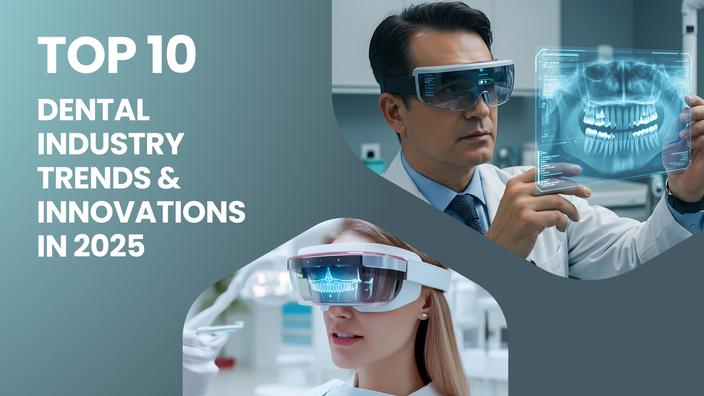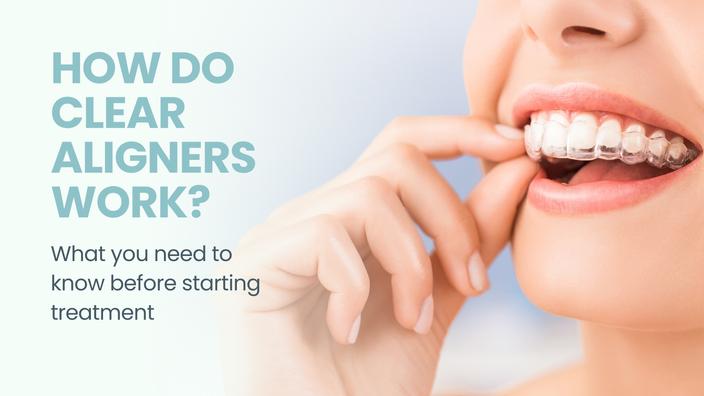September 08, 2022
History of Clear Aligners: Evolution of a Business Model

Invisalign clear aligners for teeth are in high demand. The global market for clear aligner treatments is $3.2 billion and growing at a 15-20% annual rate. Since clear aligner treatments were introduced by Align Technology (Invisalign) in 1998, the market has grown exponentially. With the continuous evolution of medical technology, a variety of business models have been developed by market participants.
Doctor-led model
Doctor-led business models have dominated the clear aligner market. Align Technology (Align), which has approximately 64% of the market, pioneered the doctor-led model for Invisalign clear aligner treatments with its brand Invisalign. Under the doctor-led model, the treatment is offered to patients directly at doctors’ offices, but treatment planning and aligner production is performed by the Invisalign clear aligners manufacturer, i.e. Align Technology. Doctors have to pay a fixed laboratory fee, which varies from $700-$3000 depending on the complexity of the case and the doctor’s track record with Invisalign. In addition to high laboratory fees, some manufacturers require doctors to pay for training prior to working with their brand.
Doctor-led models make money off the number of active doctors and the volume of aligner cases per year. For example, Align Technology had 96,000 active trained doctors with an average utilization rate of 15.9 cases per doctor in 2019. This model earned Align an average gross profit of $15.6k per doctor.
Adding a doctor to the list of providers allows companies like Align to benefit from a recurring revenue stream from the doctor’s client base. Unsurprisingly, the doctor-led model has been adopted by many other large dental suppliers, including Ormco (Spark), Straumann (ClearCorrect), Dentsply Sirona (SureSmile). Henry Schein (Reveal, SLX), and 3M (Clarity Aligners). Most of these players were able to break into the clear aligner market by building upon their established base of GPs and orthodontists who were using their other products and services.
But, the model has limitations. The price of Invisalign clear aligner treatment is simply not accessible for many customers. Prices for patients range from $3000 all the way up to over $8000. Doctor-led models limit the control GPs and orthodontists have over a treatment, which creates delays and other issues.
Direct-to-consumer (D2C)
Direct-to-consumer models of clear aligner treatments have been introduced to increase accessibility and decrease costs to consumers. This model addresses the limitations of the doctor-led model and eliminates visits to the doctor’s office altogether. Cases are evaluated in the comfort of a customer’s home or at one of the company’s brick and mortar locations. A customer may receive aligners at her home within 48 hours.
Cutting doctor’s visits out of clear aligner treatment has allowed D2C players to slash the price of treatment for customers to below $2,000 per case. These price advantages have opened the clear aligner market to 500 million people worldwide (85% of people with malocclusion who can afford treatment under the current price) or 950 billion $ (with a price of 1900$). In comparison, the doctor-led model only offers a global market opportunity of 15 million orthodontic cases.
Many players have entered the quickly expanding clear aligner market, namely, SmileDirectClub (with 22% of market share), Candid, SnapCorrect, and Smilelove. These companies have spent fantastic resources on marketing and customer acquisition to compete in the marketplace. Based on the SmileDirectClub’s 2019 results, the company spent on average up to $1k in sales and marketing per one aligner case shipped with a gross profit margin per case of $1.2k.
Democratizing orthodontic treatment has come at a cost for D2C market players. The model has been widely criticized, with a number of lawsuits filed by both patients and doctors, as well as dental organizations.
From pure D2C to telehealth
Issues with the D2C model led to the development of Telehealth aligner treatments and doctor-driven D2C models. The Covid-19 pandemic has created the need for alternatives to in-office doctor’s visits. In-office visits were decreased or fully replaced by online visits and check-ins on mobile apps.
SmileDirectClub offered its Telehealth platform for free to their network of dentists and orthodontists in April 2020. Other players, such as Byte (recently acquired by Dentsply Sirona), were also offering remote monitoring. The Telehealth model creates value to doctors by opening a new customer base while ensuring a doctor’s supervision and remote monitoring of the treatment process. Despite the rise of virtual care and Telehealth platforms during the Covid-19 pandemic, prices didn’t significantly change for patients.
In-house aligners
3D printing is an alternative frontier of the clear aligner industry. Started by enthusiasts, now, having more affordable 3D printers, in-house aligners fabrication has gained significant traction amongst dentists and orthodontists. The in-house aligner model puts all the tools into the doctor’s hands. The treatment process is performed entirely by the doctor from start to finish. Doctors can accept and evaluate a case, plan treatment, and print aligners on the same day cutting costs and delays. In-house aligners provide control and flexibility to doctors and slash costs for both doctors and patients. Aligners can be printed for less than 100$ per case.
The in-house aligner model opens clear aligner treatment to an even larger potential market. The main obstacles to widespread adoption of the in-house aligner model are the lack of doctors with 3D printers (less than 15% of dentists) and doctors’ technical ability to plan treatments and operate 3D printers. Dental and orthodontic practices with their own in-office labs have started in-house aligner production, which is often combined with other providers’ offerings.
A bit modified model also gets momentum: a doctor determines a treatment plan and then order the fabrication of aligners from an orthodontic laboratory.
The evolution of the clear aligner market has proven that doctor’s involvement in the treatment process is essential for successful long-lasting treatment results and will probably stay in some form (in-office or remote) in the future where the price of the treatment may decrease as the competition intensifies.



